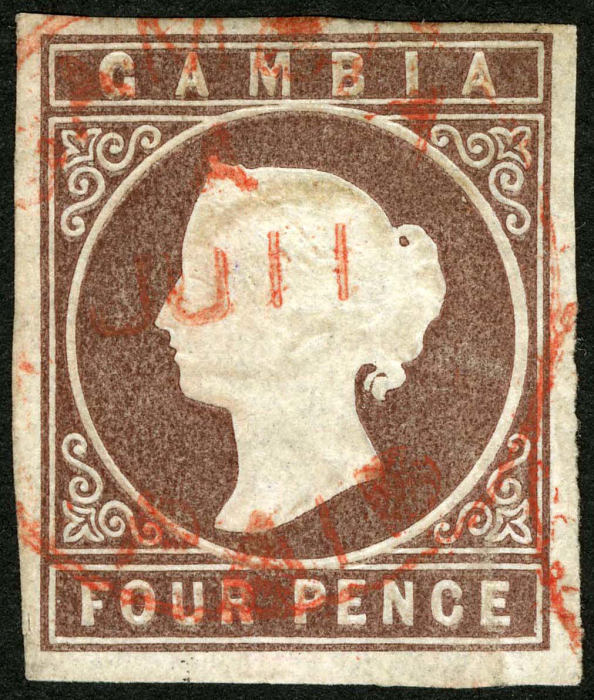

The first stamps issued for the West African colony of Gambia are noted for their simple but effective design, and for their unusual combination of printing techniques. Printed from 1869 by London based De La Rue & Co, they were produced by the double process of typography and embossing.
The colored background was typographed first, showing the name ‘Gambia’ in white letters at the top and the value in words in a matching panel at the bottom. A profile head of Queen Victoria was then embossed in white on it. This gave a cameo effect, similar to a brooch, and the stamps are known informally as the Cameos. However, this method of production was chosen not so much to make an impact as to keep costs to a minimum.
De La Rue’s standard rates would have been £50 each for a die and an electrotype relief-printing plate. For the two values needed, this would have made a total charge of £200. But the company invoiced the preparation for the typographed and embossed printings at just £10 8s 1d.
In 1869, just two stamps were issued, the 4-pence in brown and the 6-pence in blue. They were on white wove paper without a watermark, and issued imperforate in sheets of 15 (5 x 3). Although they were cheap to produce, the standard of printing was generally good and few errors and varieties arose during the 29-year life of the Cameos.
The most common is the so-called ‘sloping label’, which occurred due to distortion of the printing plate after extensive use. Because the embossing work was done separately from the printing, the head was sometimes out of register with its frame. This can give the impression of a double-embossing error, but close examination will show that it is just an alignment problem.
There are recorded examples of double embossing, but only in later printings and on certain values. A new definitive set, using De La Rue’s colonial keyplate design, was introduced in January 1898, and all remaining stocks of the Cameos were destroyed in 1909.
